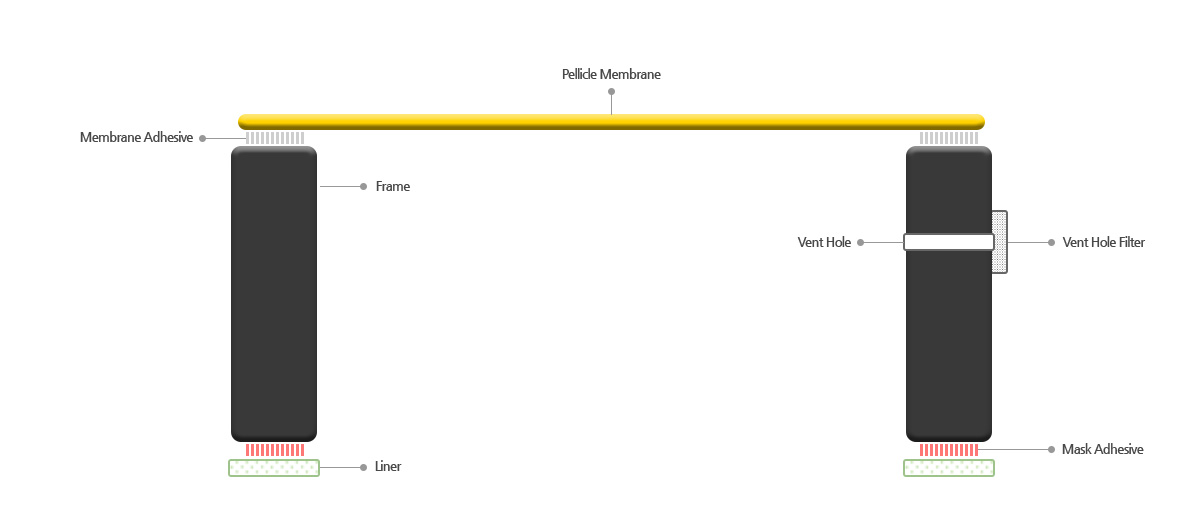Pellicle Overview

- Definition & Usage
-
FST’s Pellicle Division develops and manufactures pellicles used in IC and FPD manufacturing processes.
A pellicle is a critical component that protects the photomask during exposure by preventing direct contact with contaminants or particles, thereby minimizing mask contamination and enhancing both yield and process reliability.
FST offers a comprehensive lineup of pellicles compatible with various exposure wavelengths.
Leveraging proprietary expertise in materials engineering, thin-film coating, frame bonding, and contamination control, FST provides fully customized solutions tailored to each customer’s process requirements.
- Purpose of Use
-
- Prevention of photomask contamination and physical damage
- Improvement of semiconductor device yield
- Extension of photomask cleaning cycles and overall service life
- Isolation from contaminants generated during repeated use
- Principle
- Structure
Principle
- Principle
- Structure


- Pellicle Structure
- Pellicle Membrane
A thin film optimized for each exposure wavelength, offering high transmittance, high mechanical strength, and excellent thermal stability. - Frame
A structural component that supports the membrane and mounts onto the photomask, designed for optimal thermal expansion characteristics and mechanical rigidity. - Membrane Adhesive
Bonds the membrane to the frame with high reliability, maintaining adhesion even under high-temperature and vacuum conditions. - Mask Adhesive
Applied in certain models to allow easy attachment and detachment from the photomask.
- Pellicle Membrane


Top
